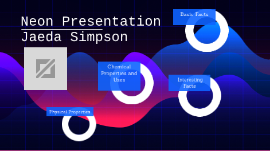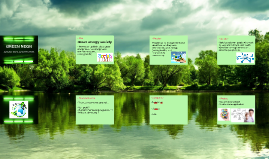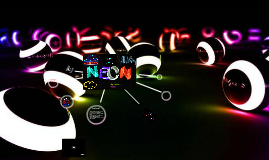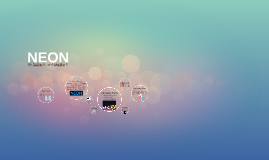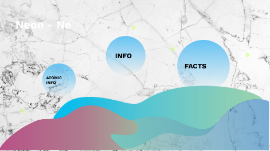Neon Presentation
Transcript: Neon Presentation Jaeda Simpson Element Name and Symbol: Name: Neon Symbol: Ne Basic Facts Element Family Noble Gases Atomic Number 10 Atomic Mass 20 Interesting Facts Interesting Facts When, Where, and How was it discovered? When was it discovered? When? Neon was discovered in 1898. Who Discovered It? Who? Neon was discovered by Scottish chemist, Sir William Ramsey and English chemist, Morris Travers. Why is it named that? Why? Neon's name comes from the greek word "neos", meaning "new" Neon can be found in 2 places, the Earth's crust and the Earth's atmosphere. It is considered a very rare element and it can also be produced from a process called distillation. Where is it typically found in the world? Where? Physical Properties Physical Properties What does Neon look like: Neon, under its normal conditions is a very light, inert gas. When it glows it gives off a reddish-orange color. Metal, Metalloid, or Non metal? Metal Non-Metal Metalloid Neon is a non metal. Melting & Boiling Point Melting & Boiling Point Melting Point: -248. 57 C Boiling Point: -246.0 C CONVERSION Solid, Liquid, Gas? This gas is colorless and odorless Neon is a monatomic gas. Density & Hardness Density & Hardness Density: 0.0009 g/cm cubed Hardness: Neon is not hard because it is a gas. 3 uses for this element: Brightly lit signs Television tubes Refrigerant when in liquid form How is it beneficial? Neon produces a very vibrant light that has been used for many signs. Such as when a store needs to let people know if they're open or closed they purchase those signs. I think it is very beneficial to our society. Names for 3 common compounds : Fluorine, NeAr, NeH Is my element important: Yes, I think Neon is one of the most important elements. Neon is also used as a refrigerant which is a chemical used for air conditioning. I think every human needs an air conditioning and Neon is a component of allowing us to have it. Chemical Properties and Uses






